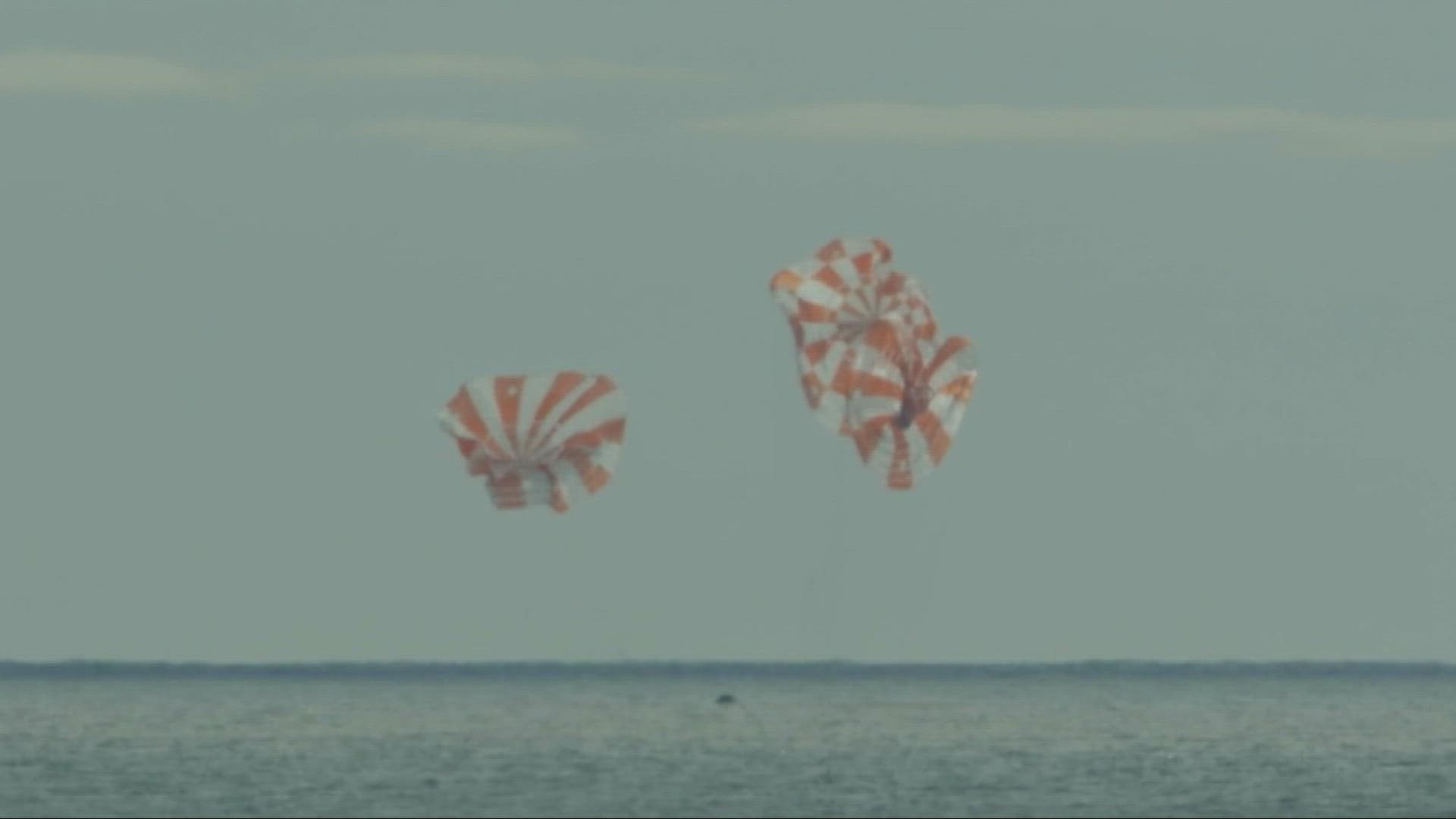CLEVELAND — “The latest chapter of NASA’s journey to the moon comes to a close. Orion, back on Earth.”
Those were the words that greeted the Orion capsule as it splashed down Sunday in the Pacific Ocean off the coast of California. The spacecraft’s successful return to Earth marking the close of the Artemis I mission, an uncrewed mission that launched from Florida in November, traveling around the moon and back.
This first mission was meant to act as a sort of test flight for Artemis II, which will carry astronauts into space and around the moon. The team at NASA will be paying close attention to data collected from this flight, which traveled about 270,000 miles away from Earth at its farthest point, and endured scorching temperatures of about 5,000 degrees upon reentry.
“This mission is a great success for us,” said Vanessa Wyche, NASA Johnson Space Center Director in a press conference. “Right now, this tells us this spacecraft has the outer bones and everything that it needs. Now we are going to go and finish outfitting it so that we can put humans on board on Artemis II. And that’s for us, a big, big deal because we’ll put our astronauts on board.”
According to NASA, crew selection for Artemis II will take place in the first months of 2023. Artemis III’s goal is to put humans back onto the moon.
“This time, we go back to the moon to learn to live, to work, to invent, to create, in order to go on out into the cosmos to further explore,” said NASA Administrator Bill Nelson in a press conference.
Northeast Ohio has played a role in the Artemis mission throughout the process, according to Josh Freeh, chief of the Human Exploration and Space Operations Office at NASA’s Glenn Research Center in Cleveland.
“We did a lot of the major testing out in Sandusky,” Freeh told 3News Monday. “We had entire vehicle testing out there, both thermal and vacuum, and vibration testing and electrical testing as well. Just a huge amount of really, really important testing for the mission out in Sandusky.”
Freeh said the work continued in Cleveland, and said team members were on the ground in Florida and Houston throughout the mission.
“Part of the team works with the European team daily to get their part integrated and brought into the mission,” he said. “And we have other people here that do all kinds of thermal and structural analysis, and electrical analysis, and other design parts and testing that really contributes to the main part of the mission itself.”
Northeast Ohio’s involvement in the Artemis mission isn’t over yet. Freeh said that in about a year, the capsule will be brought back to Sandusky for additional testing.
“We’re going to take that entire crew module, the rest of it, bring it back up to Sandusky here, and do some more testing here at the Armstrong Test Facility in Sandusky,” Freeh said.
Freeh said that there have been celebrations at NASA over the success of the mission. However, he said tests have already been underway for Artemis II, and more work is still to be done.
“Having this mission succeed as well as it did, and really give us that first step towards Artemis II, Artemis III and getting back to people on the moon, and really sustainably on the moon, too, I think is just huge milestones for us,” he said.
Freeh said meetings are already underway regarding objectives for when astronauts do eventually get back onto the moon.
“We’re not talking about going to the moon for a few days and coming back, we’re talking about going there and staying there,” he said. “Going to new spots, the south pole for example, which is a really incredible area, and there’s potentially water there, there’s places there that have never seen sunlight. Lots of science objectives as well, so just a really exciting place to go.”
Looking ahead, Freeh said crew selection for Artemis II could happen in the beginning of 2023, with the aim to launch the mission in 2024. Artemis III is currently slated to launch in 2025.

